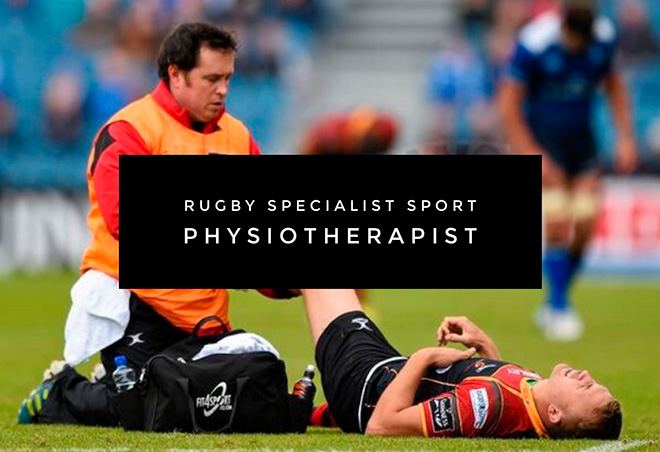In this post, we are going to be talking rugby, and specifically the management of rugby-related injuries, which is a subject very close to my heart. I have spent last nine years as a Head Physiotherapist within full-time elite professional rugby environments within the Pro14, Aviva Premiership and English Championship with Newport Gwent Dragons and London Welsh RFC. This has given me a privileged insight into the workings of high performance elite rugby teams.
Rugby has changed hugely in the last 10 years, with improved physical performances on field due to ever increasing specificity and complexity of strength and conditioning programmes, and the buy in from coaches and players about the need for harder physical preparation and training! This has led to faster games, with higher running speeds and greater collisions. Along with recent rules changes, the unfortunate side effect of injuries has been highlighted again by recent media releases last month...
http://www.bbc.co.uk/sport/rugby-union/41544641
The beginning of the 2017-18 season has been marred with a surprise injury crisis across both the Aviva premiership and Pro 14 competition. Wasps having 15 players unable to train or play and a Welsh team with 31 players unavailable at one point!
Rugby Injuries
The main sub types of injuries that can be seen at all levels of the game can be divided into:
- Contact/Collison Injuries (eg Concussions, Shoulder Injuries, Knee ligament injuries, Ankle Ligament etc)
- Non-Contact Injuries (eg Hamstring Injuries, Tendon Injuries and Groin Pain)
I am going to discuss the main types of shoulder contact injuries today and how you can reduce the likelihood of them. I’ll also discuss how I can help you recover and make you more robust for next time you step onto the pitch.
Rugby Shoulder and Neck Injuries
Shoulders are most commonly injured in the tackle, and often it’s the tackler that gets injured. Acute tears of the cartilage in the shoulder (labrum) are common with direct impacts or with the arm outstretched to the side. The shoulder may sublux partially and not always dislocate. You may get a deep ache in the shoulder, or it may feel like a dead arm initially, and sometimes feel unstable with clicking sensations. Recovery can be slow, and players often struggle with deep anterior shoulder pain on bench press or horizontal and vertical pushing exercises in the gym. You may be able to continue to play at the elite level, but this is only an interim measure until surgery can be planned at an appropriate date — often at the end of the season.
Direct impacts or landing heavily can also injure the Acromioclavicular (AC) joint at the top/point of the shoulder/clavicle. This can lead to pain and swelling, and in higher grade injuries a step deformity at the end of the clavicle. Pain can often be created with movements across your midline and overhead. The pain during movement may settle quickly, and movement may come back, but the real test is can you load it pain free in press ups. Often, this, and return to hits on a bag, can take longer. Make sure you have completed several contact sessions before returning to play; don’t hide it — it’s better to find out in training that you are not ready and pull out ahead of the match, rather than find out during it.
What you can do when injured or to prevent injury
- If you dislocate your shoulder, or have severe pain attend an emergency department.
- POLICE! — Use Protection, Optimal Loading (controlled movements/exercise), Ice, Compression and Elevation to rest your shoulder for the first 3-5 days.
- Get new shoulder injuries assessed, especially if the shoulder feels loose, clicky and clunky.
- Get strong and work hard in the gym and on the field — this provides you with increased resilience and robustness to injuries — include rotational shoulder and trunk exercises and overhead exercises challenging both the front and back of the shoulder/shoulder blade.
- Tackle technique. Practice, master the basics and revisit, as, from my experience, some of the best tacklers (open side flankers) who I have met have had shoulder injuries or surgery, have learnt the importance of tackle technique.
- Footwork into collision/ tackle. This can reduce the chances of the person tackling you from applying all their force if you catch them off guard and this also may protect you. In defence, if your footwork is good, you may get into a better position to tackle someone, so your shoulder is not maximally stretched out to the side while tackling.
- AC Joint injuries are commonly padded on return to contact training and match play.
- Do not rely on strapping to protect you from injury — do the hard work in training.
What I can provide:
- Accurate diagnosis of the sub-type of contact injury you have.
- Advice on ability to continue training/playing or consideration of rest/active rehab.
- Treatment and rehabilitation including strength and conditioning.
- Onward referral to a relevant expert consultant to help you with your decision making in the continuing management of your condition as necessary.
- Injury reduction strategies for younger players new to the game.
- Reviews of injuries that you have just recovered from to make sure that you are ready to return to contact training and return to play rugby. A full return to play assessment or ‘fitness test’ as coaches and players prefer to call it!
In Part 2, I will look at the other type of contact injuries that are common in the game and best practice elite level management of these.
Thanks for reading!
